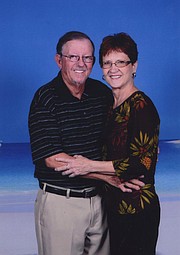On April 4, voters will decide Propositions J and C, which present Jefferson City Public Schools' two high school plan.
Proposition J will ask voters to authorize a 65-cent tax levy increase to fund a $130 million bond issue to build a second high school and renovate the existing one to make it an equitable facility in terms of square footage, design and safety. Proposition J requires a 57 percent approval vote in order to pass.
Proposition C will ask voters to authorize a 45-cent operating levy - 25 cents to cover the operating costs of a second high school and 20 cents to cover needs within the existing school system. Proposition C requires a simple majority vote in order to pass.
If both issues are approved, a Jefferson City family which currently owns a $150,000 home would pay about $25 more a month or $300 more a year in property taxes; personal property taxes would also increase, although by much smaller amounts. Taxes on residential and personal property are calculated in the same way: assessed value of the property (not the appraised value), divided by 100, then multiplied by the overall tax rate.
Q. What happens if Proposition J fails, but Proposition C passes?
A. "We would for sure go forward with the 20 cents," JCPS CFO and COO Jason Hoffman said of the part of Proposition C that covers existing needs of students at the school district's other buildings.
The district has stated it would not collect the other 25 cents per $100 of assessed valuation from taxpayers, that would have covered the operating expenses of a second high school.
Q. Where would athletic teams from both schools compete for home games?
A. JCPS Superintendent Larry Linthacum explained both schools would share Adkins Stadium for football and track competitions.
Competitions for baseball, soccer and softball would continue at their current locations, Linthacum said. Each school would have volleyball and basketball competitions at their own gyms.
Q. What would the tornado safety of the two high schools be, with a lot of glass and open commons spaces in the architectural renderings?
A. Cary Gampher, principal architect at Architects Alliance, said, "The theory is that the people running that student commons, the administrators and staff officed in that can see north and south a long ways. They can see anything approaching the building, so that's very intentional to be transparent in that part of the building."
"And then as far as the auxiliary gym, it is rated as a storm shelter. It is basically over-built, and the school district can apply for matching funds for a significant portion of that construction cost, which we have not banked on in the estimates we have," Gampher added.
Both schools would have gymnasiums that will be Federal Emergency Management Agency (FEMA)-certified tornado shelters. As such, FEMA grants may also help cover some of the costs of building the reinforced structures, as Gampher explained.
He also said, "whether there will be absolutely that much glass in the final design, I don't know."
He said there would also be no issues in moving all students and staff from the opposite ends of the buildings into the gym shelters quickly. "For a rated storm shelter, you actually have a half-mile radius to get to a shelter."
Q. Would there be incentives for workers to stay under cost or completion time estimates?
A. "I'm not to that contract yet, but typically the district does have incentives for completion times," Gampher said.
Q. What kind of green-energy solutions would the two high schools incorporate (to manage utility costs)?
A. "We have a whole other level of design of green-energy and building-consumption (measures). There will be no comparison," Gampher said.
He said more specific design details would come later, but added with the current high school's utility bills to study, they'll be able to make projections about what heating and cooling costs will be, and assured "It will be dramatically improved."



